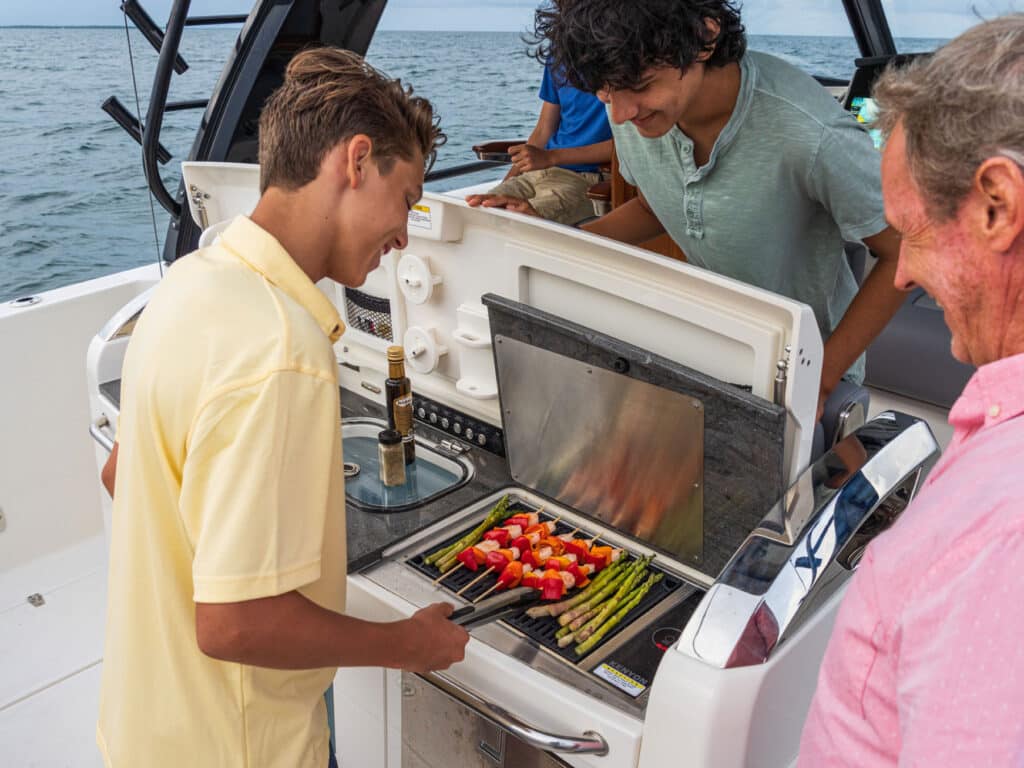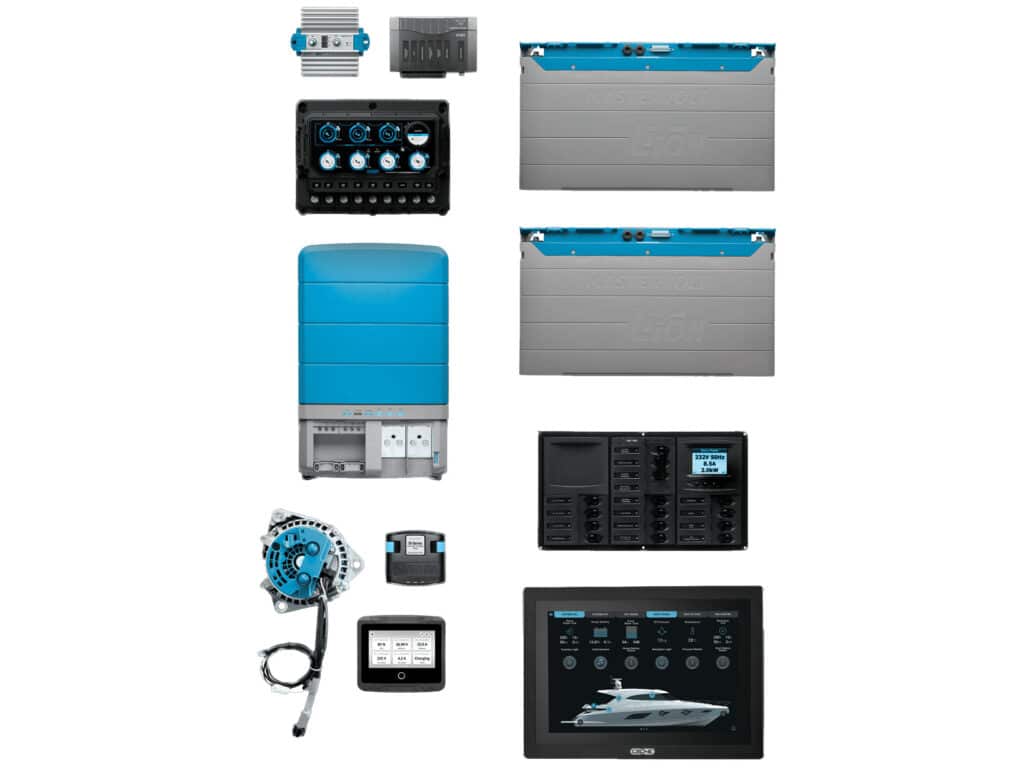
Amid the sweltering heat and bustling throngs of boat shoppers during the Palm Beach International Boat Show two years ago, I reached a moment of clarity. It was then, while attending the introduction of Scout Boats’ new 350 LXZ, that I realized for the first time that lithium-battery-based auxiliary power systems were not only viable for boating anglers, but also represented the wave of the future for saltwater fishing machines.
Scout—always the innovator—had employed a truly practical and advanced lithium-battery-based system in place of an old-school internal-combustion marine generator. While the 350 LXZ was not exactly a hardcore fishing boat, it served as an example of what’s possible today and in the future. The lithium battery system on board this model incorporated a host of features, including solar panels, to supply beaucoup electrical power to systems such as the air conditioning that cooled my brain and gave me clarity that day.
Supplanting the Genny
Fossil-fuel marine generators have long served the electrical needs of boating anglers while away from shore power. A genset or genny, as these are often called, provides great convenience in powering onboard systems such as air conditioning, refrigeration, pumps, microwaves, cooktops, gyrostabilizers and lighting.
Yet there are downsides to marine generators, as any boating angler who has had one can relate. Marine generator systems tend to create maintenance issues, are prone to cooling problems, and can become finicky at times. They also require separate fuel delivery systems, sometimes need a separate fuel tank, and can prove to be smelly, create intrusive noise, produce a lot of heat and, in some cases, generate dangerous carbon monoxide emissions.
Fortunately for today’s boating anglers, the days of needing an onboard marine generator and the fuel it burns on a saltwater fishing boat may well be winding down thanks to advancements in marine lithium battery technology and its integration with marine electrical systems. Lithium battery systems are well on the way to rivaling generators as auxiliary power sources.

e-Power Push
One company that’s pushing hard to shift the paradigm in auxiliary marine power is Navico with its new Fathom e-Power system. At its heart, Fathom e-Power uses advanced lithium-iron-phosphate (LiFePO4) battery technology to provide auxiliary electrical power for boats ranging from less than 20 feet in length to yachts.
“Lithium batteries for marine applications have gained substantial traction in the last decade,” says Eric Lindquist, VP and general manager for Power Systems at the Navico Group. “They last longer, charge faster, reduce weight and maximize space, as well as save time and money in the long run (versus lead-acid batteries)—all while minimizing negative impacts on the environment.”
Beyond Batteries
Like Scout’s lithium system, Fathom e-Power extends well beyond the batteries themselves. It is designed to seamlessly integrate a host of onboard components from brands within Navico (a Brunswick company), including BEP, CZone, Ancor and Blue Sea Systems, as well as Mastervolt LiFePO4 marine batteries and chargers.
This host includes the high-capacity alternators available on the newest outboard engines from Mercury Marine, also a Brunswick company. The standard alternator on the new Merc V-10 Verado outboard will deliver 150 amps of 12-volt DC charging at just 1,500 rpm, more than twice that of the older 2.6-liter inline-six Verado and 30 percent more than the Verado V-8 outboards. The new V-10 is also available with an optional 48-volt alternator for compatible e-Power systems.
“Navico Group’s portfolio of diverse products and brands puts us in a unique position to deliver advanced integrated technologies like the Fathom e-Power system,” says Brett Dibkey, Navico Group president. “The enhanced Fathom system provides reliable power management and control, allowing users to better understand and manage their power needs.”
Cutting the Cord
Some models within the Brunswick Boat Group are already incorporating Fathom e-Power as original equipment. Most notably for boating anglers, the system is available as an option on the Boston Whaler 360 Outrage. As a side note, Fathom is available only as original factory equipment on new boats and is not available for installation as an aftermarket product.
That said, Fathom e-Power should allow boaters to extend their time away from the umbilical of a shore-power cord, enjoying electrical power in a remote anchorage or other locale without the drone of a generator spoiling the naturally quiet and tranquil scene.
Yet how much auxiliary power can you expect? Each situation will vary depending the system, state of battery charge and power consumption. But with the 24 kilowatt-hour 48-volt Fathom battery bank, boaters could run moderate electrical loads for four hours without draining the batteries or needing to recharge, according to Navico.
Easy Monitoring
Fathom’s intuitive user interface makes it easy to keep an eye on power consumption and state of charge and control the system via multifunction displays or smart mobile devices. It can provide a report on battery status, including a practical “time to empty” indicator, enabling boaters to make an informed decision regarding onboard energy reserves. Boaters can also set alerts and reminders to recharge batteries based on custom preferences.
The nature of marine auxiliary power is changing quickly and, in my opinion, for the better. It is a future made possible by advancements in lithium battery technology and related marine electrical systems.









